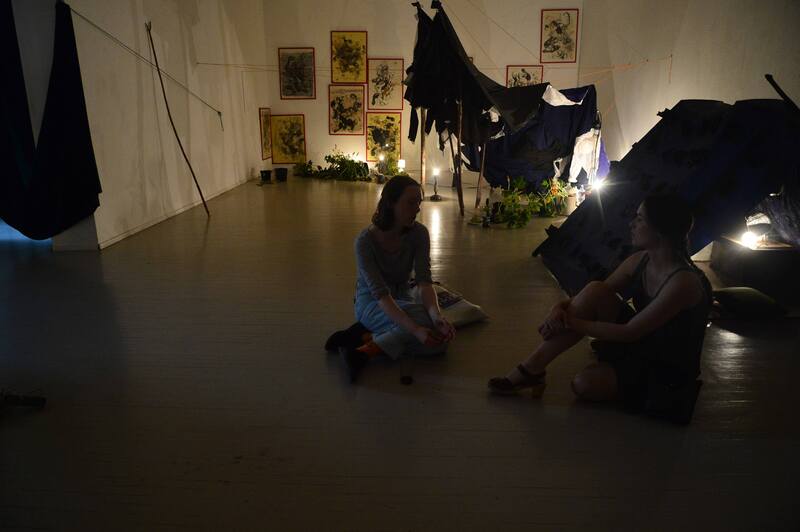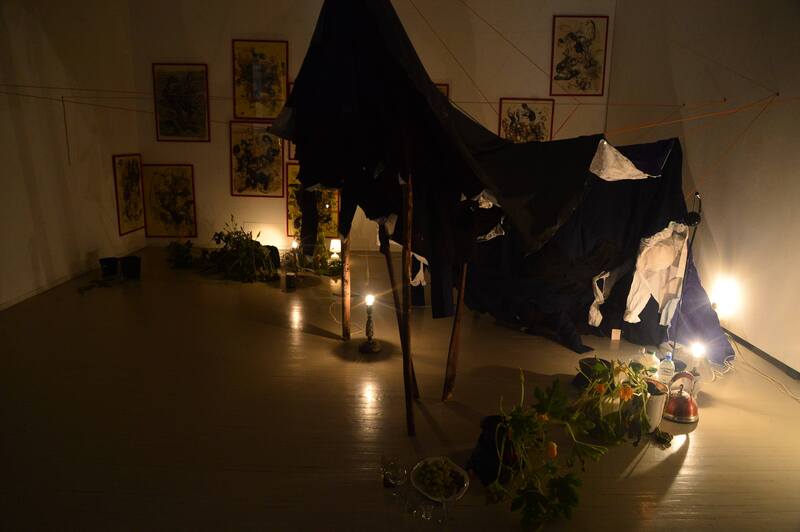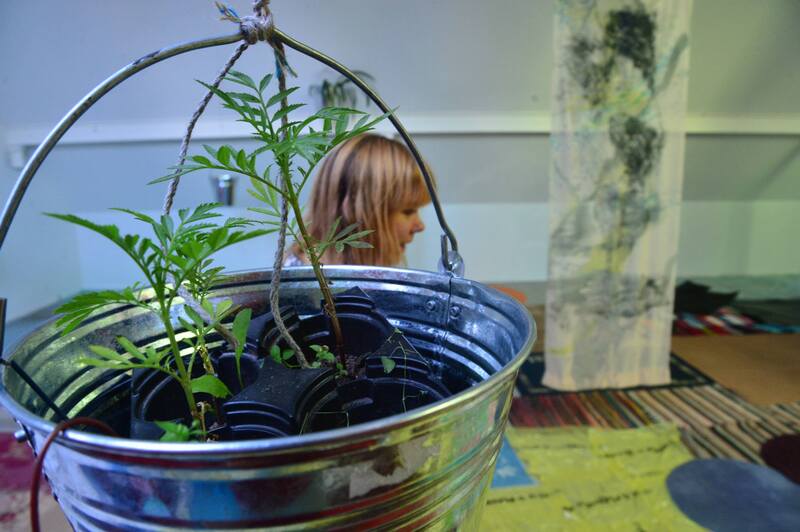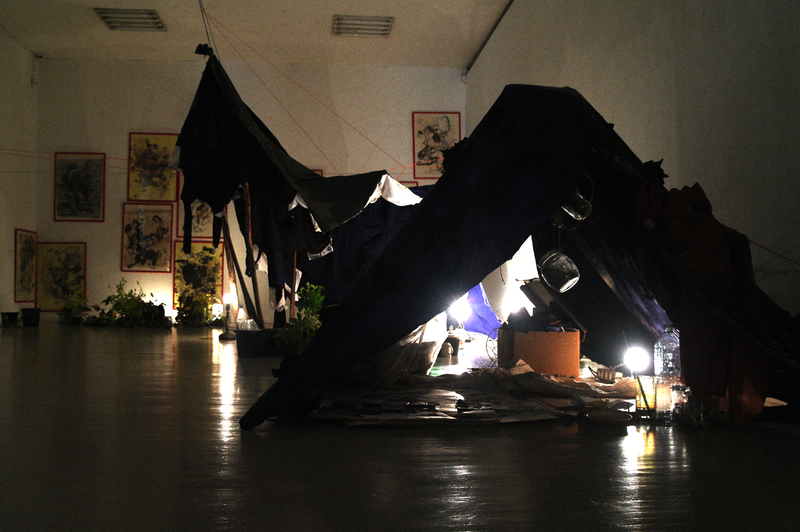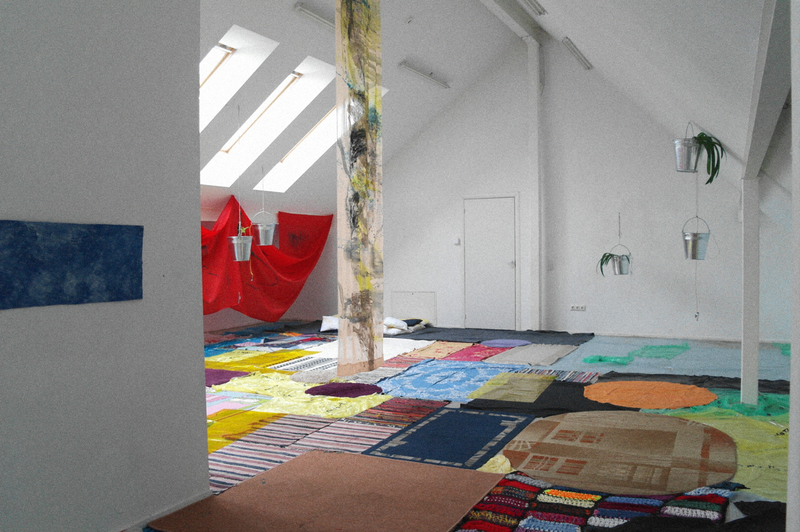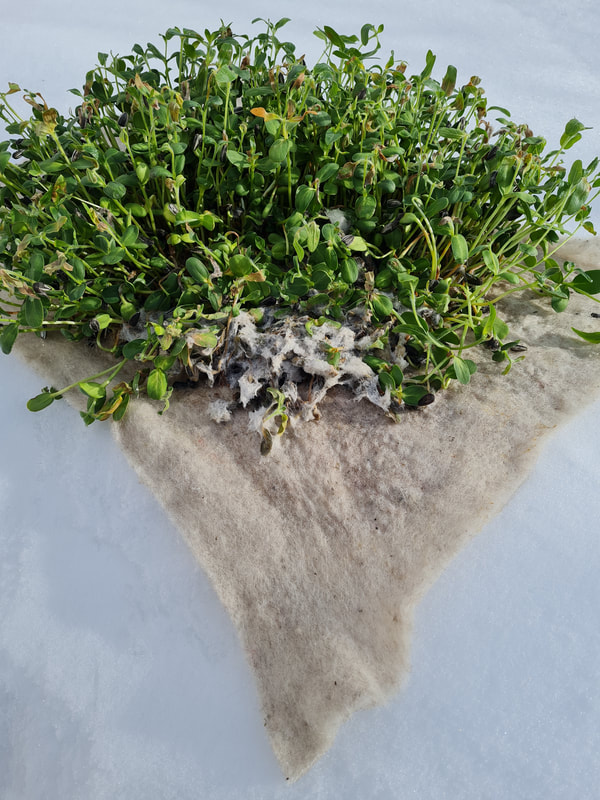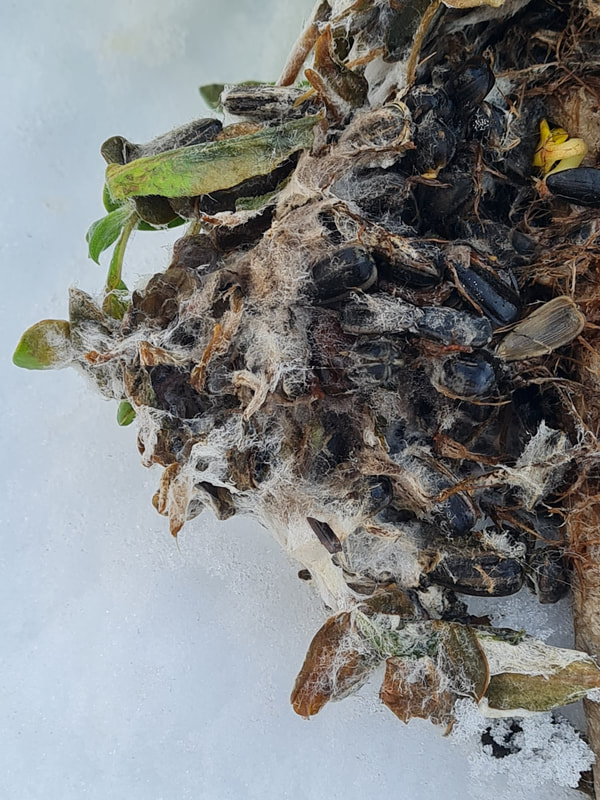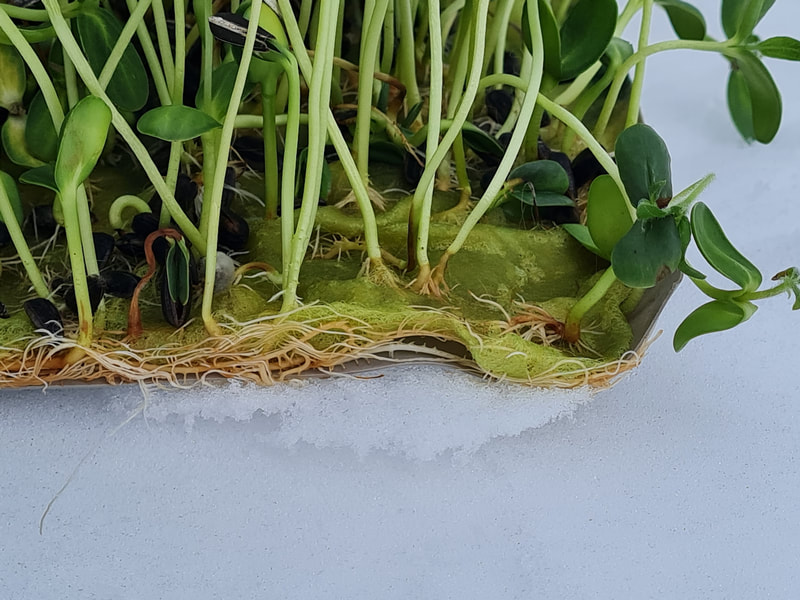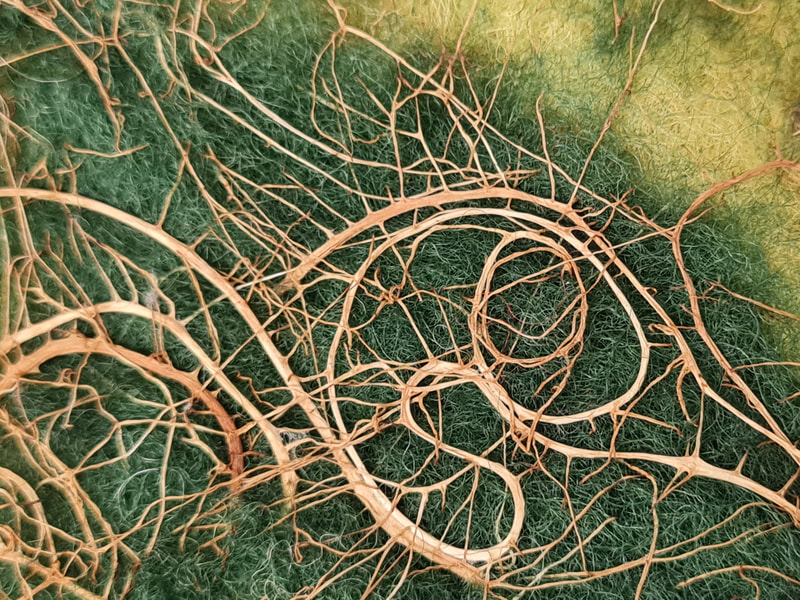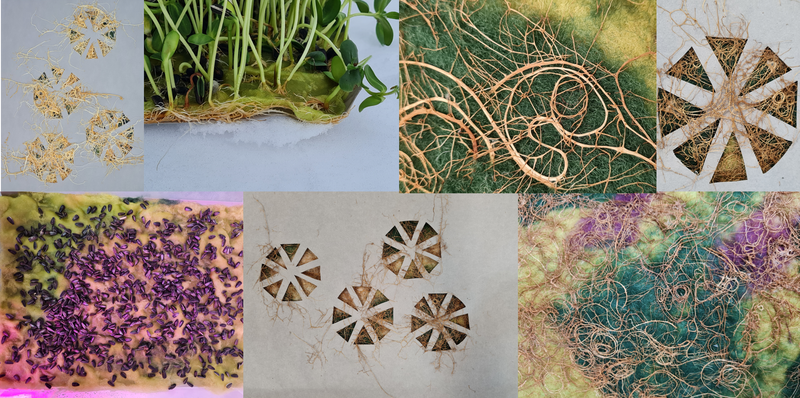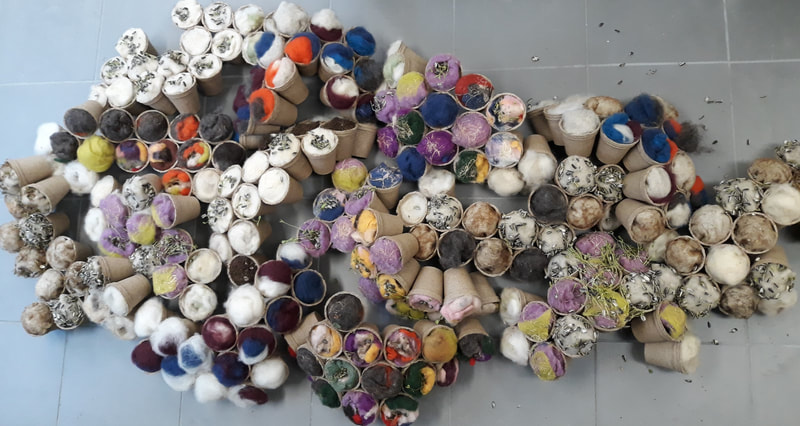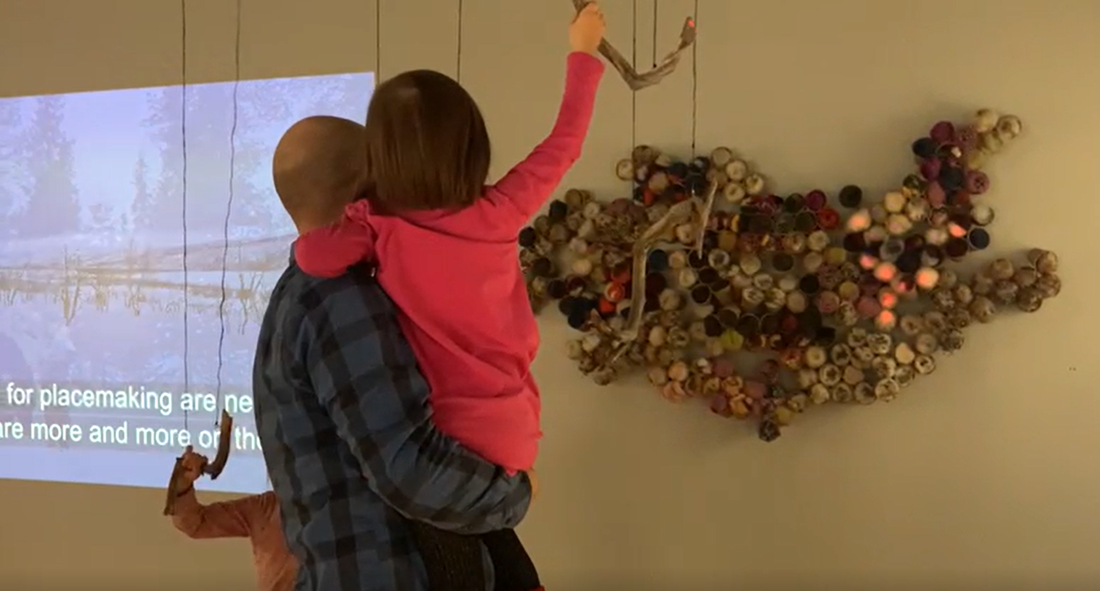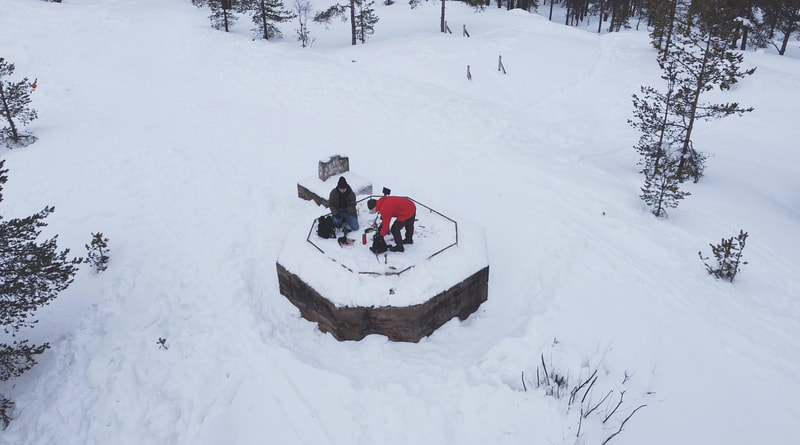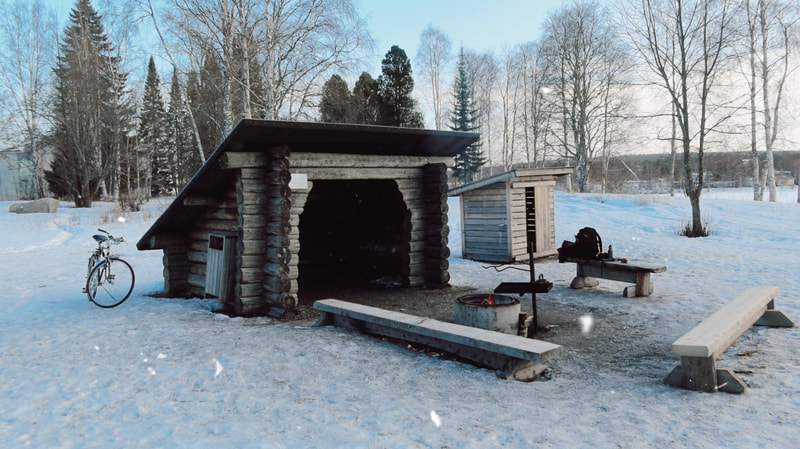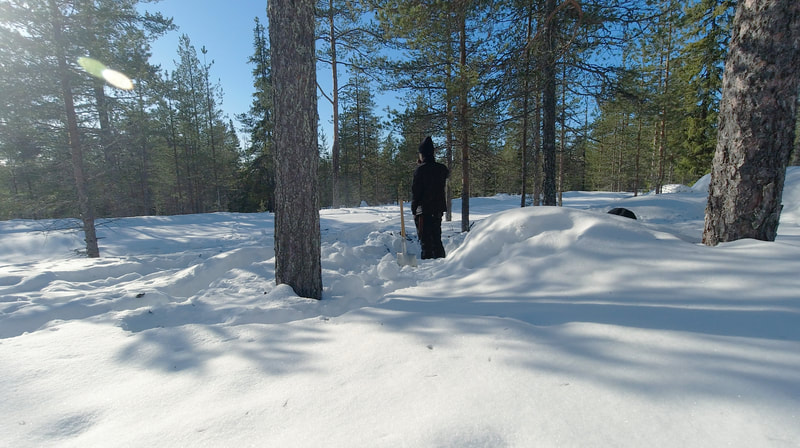Is Money a Dirty Word?
Melanie Sarantou & Niina Karvinen
The ‘Is Money a Dirty Word?’ artistic experiment sought to explore the issues surrounding the disappearance of certain artistic forms when left to market forces. Such issues stem from the historic tensions that exist when art is culturally significant and autonomous with a value of its own outside the external capitalist market forces. However, financial resources are an important force in most aspects of our lives; therefore, questioning whether a divide between market forces and autonomous art practices exists is reasonable.
The entrepreneurial potential of the arts is widely present in cultural policy that succeeds through competition, yet many artists find themselves in marginalised positions in the business world. Therefore, money may be considered a dirty word in the artistic world, as power structures and the dominance of capitalism is widely discussed there. However, the arts can hardly be removed from money, income generation and funding. Even artists who want to distance themselves from money often count on receiving funding to achieve their artistic project goals and outcomes. In addition, the business world is also learning, gradually, how to harness the power of the arts and creativity in business and organisational practices.
This artistic and design-thinking experiment sought to understand the attitudes of artists after engaging in an ‘empathy-hack’ with business mentors and service designers. The aim was to experiment with new possibilities—what could be and what ought to be—for artists to engage in the business world as such. New possibilities for artists to find pathways into sustaining their livelihoods were sought for a different and fast-changing world in which the margins have become further blurred and omnipresent by the pandemic and a growing need for artists to function and work through virtual spaces, the internet and mobile applications. Four of the sub-projects of the experiment are illustrated hereafter.
The entrepreneurial potential of the arts is widely present in cultural policy that succeeds through competition, yet many artists find themselves in marginalised positions in the business world. Therefore, money may be considered a dirty word in the artistic world, as power structures and the dominance of capitalism is widely discussed there. However, the arts can hardly be removed from money, income generation and funding. Even artists who want to distance themselves from money often count on receiving funding to achieve their artistic project goals and outcomes. In addition, the business world is also learning, gradually, how to harness the power of the arts and creativity in business and organisational practices.
This artistic and design-thinking experiment sought to understand the attitudes of artists after engaging in an ‘empathy-hack’ with business mentors and service designers. The aim was to experiment with new possibilities—what could be and what ought to be—for artists to engage in the business world as such. New possibilities for artists to find pathways into sustaining their livelihoods were sought for a different and fast-changing world in which the margins have become further blurred and omnipresent by the pandemic and a growing need for artists to function and work through virtual spaces, the internet and mobile applications. Four of the sub-projects of the experiment are illustrated hereafter.
The Nomadic Radical Academy
Marija Griniuk
|
Photos and video: Marija Griniuk
|
Future scenarios for my artistic intervention ‘The Nomadic Radical Academy’ were developed and discussed during the ‘Is Money a Dirty Word?’ project. This artistic intervention was previously realised as a pilot project at the Gallery Meno Parkas in Kaunas, Lithuania, in 2019 and 2020. It focused on discussion about eco-friendly behaviour and responsible consumption and was carried out utilising the methods of InterMedia and Fluxus pedagogy. The discussions raised during Is Money a Dirty Word?’s workshops resulted in a conference presentation in May 2021 concerning the network-building and multidisciplinary approach to a participatory performance artwork involving an international community within a local project for children and young people. Furthermore, a video was finalised to communicate the experience of The Nomadic Radical Academy to a wider audience. The value of Is Money a Dirty Word? lies in how it is creating an international artist community and addressing the important questions of sustainability, collaboration and project development. For the artist, it is of great importance to unfold a pilot project into something with wider scope and develop strategies to communicate, document and reflect on the project and its impact on the target groups and communities.
|
BioARTech: Roots are Stitching
Heidi Pietarinen & Melanie Sarantou
The BioARTech laboratory was established at the University of Lapland as part of the AMASS European Testbed to study bioart and its intersections in the fields of art and research. Artists Melanie Sarantou and Heidi Pietarinen grew living fabrics in the BioARTech laboratory that consisted of a three-dimensional felted textile, the shapes and surface of which are quilted by the root growth of organic material, and it has been shown publicly in an art exhibition. Methodologically and theoretically, scientists and artists are investigating organic matter as a laboratory material, smart textiles, different methods of biotechnology and different art trends, such as material-based art. Bioart is an art trend that developed in the 21st century. It is characterised by an interdisciplinary and artistic approach, applying methods such as medicine and biotechnology. Natural art is also naturally set in the frame of reference for the digitisation of new services and art-based research.
Sarantou experimented with the agency of plant roots to create embroidered textiles, while Pietarinen explored growth within bioplastics, rhizome formations and wind drawing. Controlling the growth of patterns was out of the artists’ hands, as the agency of the growing matter, or growing textiles, was outside of their reach. For example, formations of mould and processes of decay and death led to new processes of growth that diversified the outcomes of the experiments. Not only was root embroidery and felting created, but also recolouring and disintegration were among the examples.
The establishment of the BioARTech Laboratory and Remote Working Group, participation in national and international bioart research networks and work on hybrid model research platforms have reinforced the realisation that these processes of research and artistic action in multidisciplinary workgroups are feasible in the corporate world. The digitalisation of services, bioart and technology and art-based methods offer a significant opportunity to promote green growth and life-cycle thinking, together with SMEs. Life-cycle thinking can be made into an everyday means of working when nature research and its intelligent processes, as well as digitalisation, are taken as key objectives in the design, production and delivery of products and services. The coronavirus period has thus laid the foundation for effective measures to overcome the crisis of the pandemic, when the concrete results that have already emerged during project planning can be further utilised.
The bioart created in the laboratory was integrated in a group exhibition titled ‘Growth, Death and Decay’, described below.
Sarantou experimented with the agency of plant roots to create embroidered textiles, while Pietarinen explored growth within bioplastics, rhizome formations and wind drawing. Controlling the growth of patterns was out of the artists’ hands, as the agency of the growing matter, or growing textiles, was outside of their reach. For example, formations of mould and processes of decay and death led to new processes of growth that diversified the outcomes of the experiments. Not only was root embroidery and felting created, but also recolouring and disintegration were among the examples.
The establishment of the BioARTech Laboratory and Remote Working Group, participation in national and international bioart research networks and work on hybrid model research platforms have reinforced the realisation that these processes of research and artistic action in multidisciplinary workgroups are feasible in the corporate world. The digitalisation of services, bioart and technology and art-based methods offer a significant opportunity to promote green growth and life-cycle thinking, together with SMEs. Life-cycle thinking can be made into an everyday means of working when nature research and its intelligent processes, as well as digitalisation, are taken as key objectives in the design, production and delivery of products and services. The coronavirus period has thus laid the foundation for effective measures to overcome the crisis of the pandemic, when the concrete results that have already emerged during project planning can be further utilised.
The bioart created in the laboratory was integrated in a group exhibition titled ‘Growth, Death and Decay’, described below.
Growth, Death and Decay
Heidi Pietarinen, Satu Miettinen, Melanie Sarantou, Tomi Knuutila, Outi Valanto and Terhi Marttila
|
Photos and video: Satu Miettinen and Melanie Sarantou, 2021
|
The ‘Growth, Death and Decay’ exhibition thematically focused on growth, death and decay as directions in bioart. The works presented the rhythm, movement and sound related to data collection and the growth of organic material in the spirit of bioart.
What are the boundaries of bioart that uses living materials? What kind of information is excluded from scientific research? How can bioart be transformed into knowledge and artistic thinking through art-based methods? The COVID-19 pandemic and the transition to remote connections has caused a state of alienation for the work of the group of artists that created the starting points for material- and art-based research in bioart, e. g. on living organisms and vital materiality. Natural phenomena emerged through recordings of fieldwork in the home, kitchen lab, in a nearby forest or by following tracks in the sky, since the wind, organic root embroidery and microbes also could form images. The works convey the idea that nature does not consist of objects but can be observed through different life forms and co-creators: what could be the nature of the collaboration between artists and their natural environments? The exhibition presented researchers in bioart and art-based methods including Heidi Pietarinen, Satu Miettinen, Melanie Sarantou, Tomi Knuutila and Outi Valanto from the University of Lapland and Terhi Marttila from Porto University, Portugal. The exhibition was inspired by the AMASS project as the personal projects of Miettinen and Sarantou. The University of Lapland produced six artistic experiments as part of the AMASS European testbed of 35 experiments. Miettinen’s work explored embodied performance with nature as part of the ‘SoftPowerArt’ experiment, while Sarantou created bioart in the form of root embroidery with plants in the experiment titled ‘Is Money a Dirty Word?’. The Hämärä gallery at the University of Lapland itself provided an experimental space for the artists to improvise, explore and create combinations of digital art, technology and bioart. |
Promoting Awareness of Sustainability through Cultural Practice
Chau-Hsien Kuo
Photos and videos: Chau-Hsien Kuo, 2021.
Humans and our planet face challenges. Rapid population expansion, poverty and famine, excessive deforestation, the greenhouse effect and breakdown of the ozone layer have made people realise that over-development ultimately makes our planet unsustainable. Climate change is obvious to most people, but few take action to reverse the phenomenon. Therefore, there is still much space available for discussion on promoting a caring environment and making the environment more sustainable. People do care for nature, which can be demonstrated in ratings of photographs and even descriptions of favourite places. Therefore, influencing individuals who are the ultimate decision-makers with positive values will be a permanent cure for the earth’s collapse.
My videos aim to increase people’s awareness of caring for nature through visual and digital approaches and then disseminate the caring environment videos via mainstream social media. I use theories that influence people concerning the environment and conducted surveys to understand the current state of knowledge. I use digital ethnography as the primary strategy to understand the potential that nature itself can use for its differentiated characteristics to attract a specific audience group.
I created three videos that convey the concept of caring for nature through cultural practice in Lapland to give a guideline for filming caring for nature videos for influencers. Although the effectiveness of the videos needs further exploration, I believe they will more or less contribute to raising awareness of caring for nature when the videos are disseminated. I have used visual and digital approaches and an action framework to inspire social media influencers making environment-related videos and also attempted to recruit more people that are dedicated to a sustainable world.
1:https://youtu.be/VwdsCVKfBIM
2:https://youtu.be/fAKA4qtfu9E
3:https://youtu.be/6203H7xBTwo
My videos aim to increase people’s awareness of caring for nature through visual and digital approaches and then disseminate the caring environment videos via mainstream social media. I use theories that influence people concerning the environment and conducted surveys to understand the current state of knowledge. I use digital ethnography as the primary strategy to understand the potential that nature itself can use for its differentiated characteristics to attract a specific audience group.
I created three videos that convey the concept of caring for nature through cultural practice in Lapland to give a guideline for filming caring for nature videos for influencers. Although the effectiveness of the videos needs further exploration, I believe they will more or less contribute to raising awareness of caring for nature when the videos are disseminated. I have used visual and digital approaches and an action framework to inspire social media influencers making environment-related videos and also attempted to recruit more people that are dedicated to a sustainable world.
1:https://youtu.be/VwdsCVKfBIM
2:https://youtu.be/fAKA4qtfu9E
3:https://youtu.be/6203H7xBTwo
|
|
|
Publications
Griniuk, M. (2021). Bridging the city: Connecting art, performance design, environment and education. In Society. Integration. Education. Proceedings of the International Scientific Conference, 4 (pp. 528-538). Rezekne Academy of Technologies. https://doi.org/10.17770/sie2021vol4.6412
Griniuk, M. (2021). The nomadic radical academy: creating a dialogue about eco-friendly behaviour using arts-based methods. Challenges and Social Responsibility in Business, 82-89. https:// research.ulapland.f i/en/publications/the-nomadic-radical-academy-creating-a-dialogue-about-eco-friendl
Griniuk, M. (2021). Arts-based action research on enhancing children’s creativity through affect within participatory performance art and performance pedagogy. Creativity Studies, 14(2), 577-592. https://doi.org/10.3846/cs.2021.13775
Griniuk, M. (2022). Participatory Site-Specif ic Performance to Discuss Climate Change and Water Pollution. Pivot 2021 Conference proceedings.
Exhibitions
Heidi Pietarinen, Satu Miettinen, Melanie Sarantou, Tomi Knuutila, Outi Valanto and Terhi Marttila, Growth, Death and Decay’ exhibition, iGallery Hämärä, Rovaniemi, Finland, 9.12.2021–25.12.2021
Griniuk, M. (2021). The nomadic radical academy: creating a dialogue about eco-friendly behaviour using arts-based methods. Challenges and Social Responsibility in Business, 82-89. https:// research.ulapland.f i/en/publications/the-nomadic-radical-academy-creating-a-dialogue-about-eco-friendl
Griniuk, M. (2021). Arts-based action research on enhancing children’s creativity through affect within participatory performance art and performance pedagogy. Creativity Studies, 14(2), 577-592. https://doi.org/10.3846/cs.2021.13775
Griniuk, M. (2022). Participatory Site-Specif ic Performance to Discuss Climate Change and Water Pollution. Pivot 2021 Conference proceedings.
Exhibitions
Heidi Pietarinen, Satu Miettinen, Melanie Sarantou, Tomi Knuutila, Outi Valanto and Terhi Marttila, Growth, Death and Decay’ exhibition, iGallery Hämärä, Rovaniemi, Finland, 9.12.2021–25.12.2021
